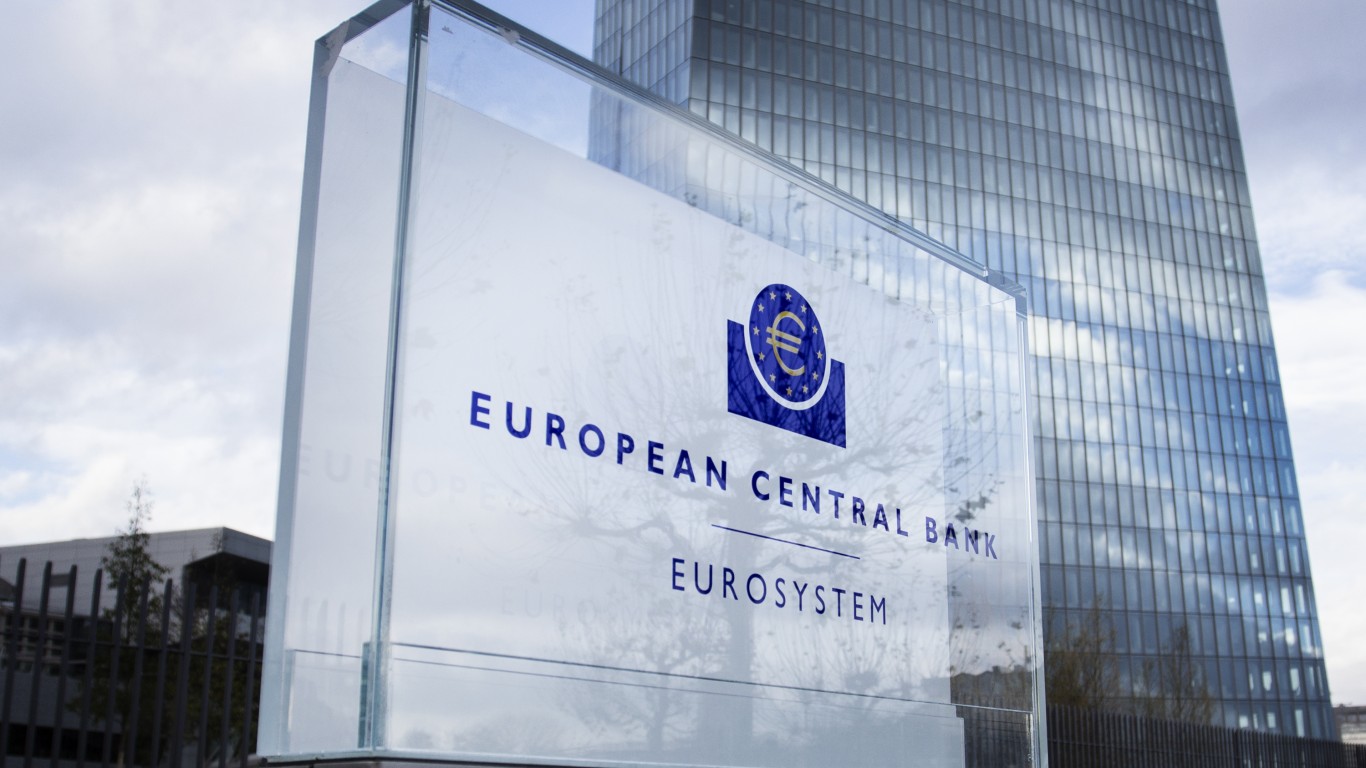Economy
European Central Bank Rate Cuts Just Support More Negative Interest Rates

Published:
Last Updated:

The European Central Bank was expected to lower interest rates, and it delivered. This is after interest rates in Europe already had been below zero in many of the bond issues. Its key deposit facility rate was cut by 10 basis points to −0.50%. The interest rate on the main refinancing operations was left unchanged at 0.00%, and the marginal lending facility was unchanged at 0.25%.
With a weak inflation outlook, the ECB also reinstated bond-buying efforts to the tune of €20 billion per month, a further step in reinstating its quantitative easing measures. The bond buying will begin on November 1 and is now expected to run “for as long as necessary to reinforce the accommodative impact of our policy rates, and to end shortly before we start raising the key ECB interest rates.”
ECB President Mario Draghi also announced that the bank now expects its key interest rates to remain at the present level, or even lower, until the inflation outlook returns “sufficiently close to, but below” 2.0%.
As far as additional measures, in a five-step program, three more efforts were addressed as follows:
- The ECB will continue reinvesting all principal payments from maturing securities for an extended period of time, and even beyond the date when it starts raising the key interest rates and to maintain “favorable liquidity conditions and an ample degree of monetary accommodation.”
- The ECB will also “change the modalities of the new series of quarterly targeted longer-term refinancing operations (TLTRO III) to preserve favorable bank lending conditions, ensure the smooth transmission of monetary policy and further support the accommodative stance of monetary policy. The interest rate in each operation will now be set at the level of the average rate applied in the Eurosystem’s main refinancing operations over the life of the respective TLTRO. For banks whose eligible net lending exceeds a benchmark, the rate applied in TLTRO III operations will be lower, and can be as low as the average interest rate on the deposit facility prevailing over the life of the operation. The maturity of the operations will be extended from two to three years.”
- Lastly, the Governing Council decided to introduce a two-tier system “for reserve remuneration in which part of banks’ holdings of excess liquidity will be exempt from the negative deposit facility rate.”
Euro area real gross domestic product (GDP) increased by 0.2% in the second quarter of 2019 after rising 0.4% in the first quarter of 2019. As far as growth or contraction (i.e., recession), the data continue to point to “moderate but positive” growth in the third quarter of 2019 and it mainly reflects “the prevailing weakness of international trade in an environment of prolonged global uncertainties, which are particularly affecting the euro area manufacturing sector.”
While the risks remain tilted lower for the economy, and with lower projections for 2019 and 2020, the newest ECB projections are for annual real GDP to rise by 1.1% in 2019. GDP growth is now forecast to rise by 1.2% in 2020 and then by 1.4% in 2021. The inflationary forecasts also were lowered to 1.2% in 2019, followed by 1.0% inflation in 2020 and 1.5% in 2021.
Draghi’s statement said:
The Governing Council reiterated the need for a highly accommodative stance of monetary policy for a prolonged period of time and continues to stand ready to adjust all of its instruments, as appropriate, to ensure that inflation moves towards its aim in a sustained manner, in line with its commitment to symmetry.
Today’s decisions were taken in response to the continued shortfall of inflation with respect to our aim. In fact, incoming information since the last Governing Council meeting indicates a more protracted weakness of the euro area economy, the persistence of prominent downside risks and muted inflationary pressures. This is reflected in the new staff projections, which show a further downgrade of the inflation outlook.
At the same time, robust employment growth and increasing wages continue to underpin the resilience of the euro area economy. With today’s comprehensive package of monetary policy decisions, we are providing substantial monetary stimulus to ensure that financial conditions remain very favorable and support the euro area expansion, the ongoing build-up of domestic price pressures and, thus, the sustained convergence of inflation to our medium-term inflation aim.
As far as loan growth, the annual growth rate of loans to non-financial corporations was unchanged at 3.9% in July 2019 and was said to have continued to be solid while short-term loans were showing signs of weakness. The annual growth rate of loans to households rose to 3.4% in July, after June’s 3.3% gain, and loan growth in general was said to be benefiting from historically low bank lending rates.
To put this in perspective, a fresh look at the key German bund yields showed that all major fixed-rate maturities are trading at negative yields. The 30-year was last seen at −0.01% and the 10-year was at −0.55%. The yield on Germany’s five-year bunds was −0.78%, and the two-year was at −0.76%.
Those yields compare with 2.22% for the 30-year and 1.75% for the 10-year U.S. Treasuries.
Are you ahead, or behind on retirement? For families with more than $500,000 saved for retirement, finding a financial advisor who puts your interest first can be the difference, and today it’s easier than ever. SmartAsset’s free tool matches you with up to three fiduciary financial advisors who serve your area in minutes. Each advisor has been carefully vetted and must act in your best interests. Start your search now.
If you’ve saved and built a substantial nest egg for you and your family, don’t delay; get started right here and help your retirement dreams become a retirement reality.
Thank you for reading! Have some feedback for us?
Contact the 24/7 Wall St. editorial team.